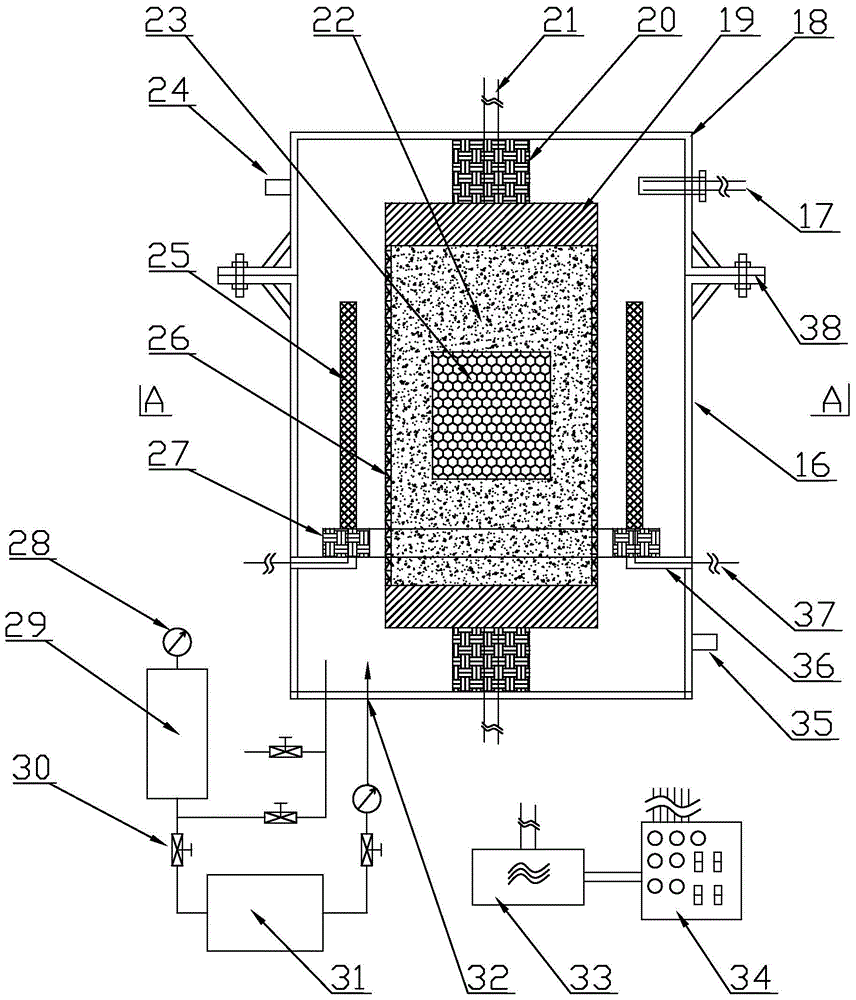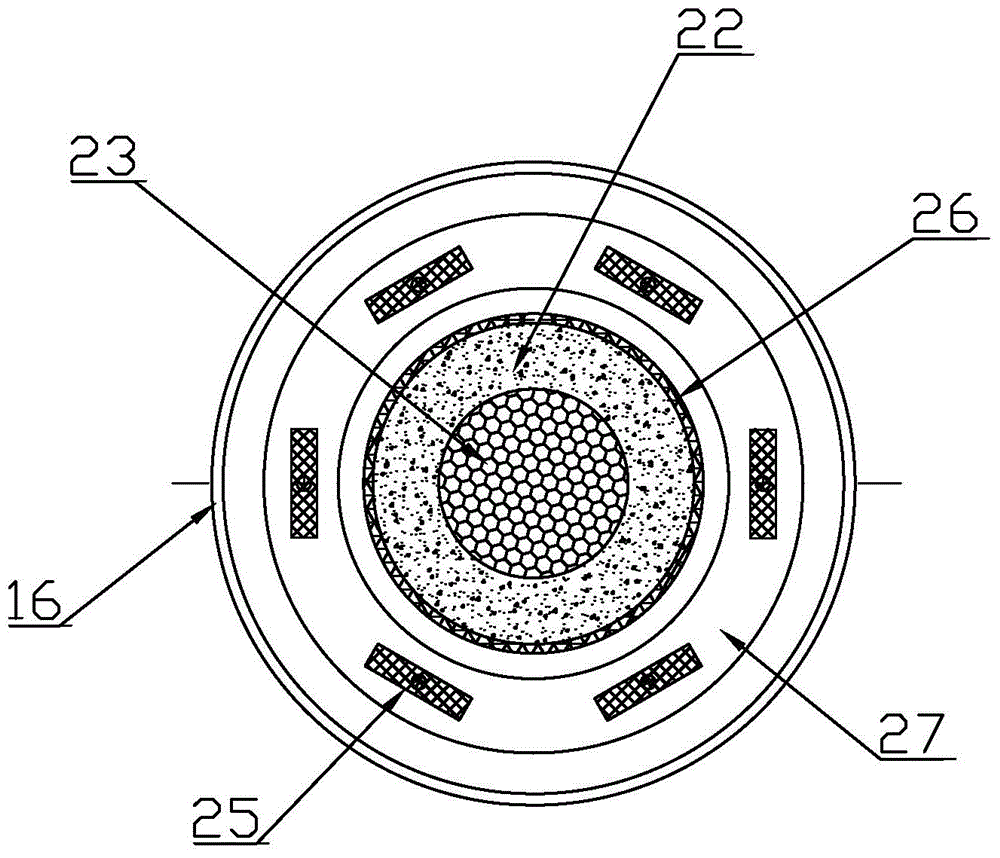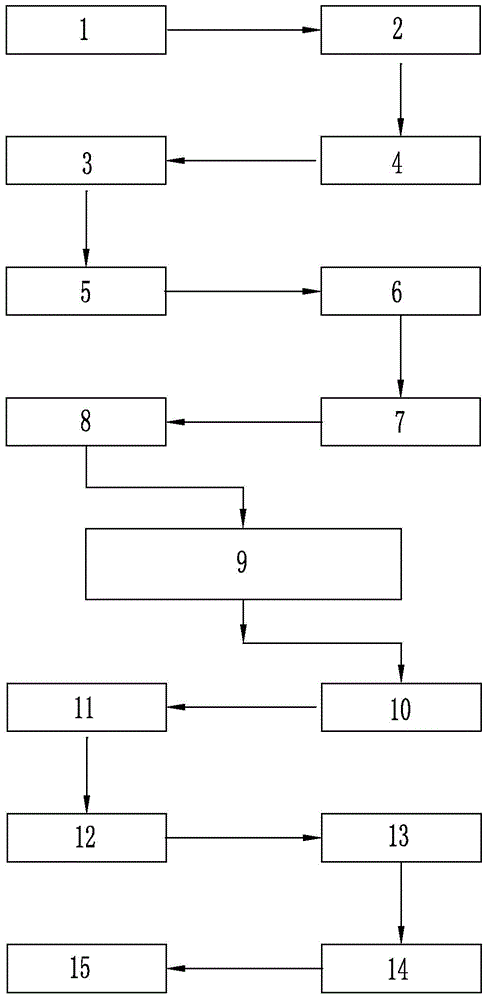Ceramic material sintering furnace and isostatic pressing field-controlled spark pulse sintering method
A technology of plasma sintering and ceramic materials, applied in furnace components, furnace control devices, furnaces, etc., can solve problems such as insufficient rearrangement and densification of extracted gas and lattice grain boundaries, uneven structural pressure, and performance defects of ceramic materials.
- Summary
- Abstract
- Description
- Claims
- Application Information
AI Technical Summary
Problems solved by technology
Method used
Image
Examples
Embodiment 1
[0067] Embodiment 1, six control electric field dual equal field control sintering furnaces are evenly distributed; as figure 2 shown;
Embodiment 2
[0068] Embodiment 2, four control electric field double equal field control sintering furnaces are evenly distributed; as Figure 5-1 shown;
Embodiment 3
[0069] Embodiment 3, uniformly distributed three arc-shaped control electric field double equal field control sintering furnace; as Figure 5-2 shown;
[0070] The isostatic field-controlled discharge plasma sintering of the ceramic material in the present invention generates heat based on the plasma state of the material itself, which is essentially different from the heating method, polarization energy method, and light energy method through an external heat source. The discharge plasma is the same as the traditional energy supply method. Compared with it, it has obvious advantages and characteristics, such as high efficiency, high energy utilization rate, no pollution, rapid overall heating, lower sintering temperature, and uniform microstructure of the material. (1) The heating and sintering speed is extremely fast. The traditional heating of materials is to achieve temperature uniformity through the conduction of the sample from the surface to the inside. Due to the poo...
PUM
 Login to View More
Login to View More Abstract
Description
Claims
Application Information
 Login to View More
Login to View More - R&D
- Intellectual Property
- Life Sciences
- Materials
- Tech Scout
- Unparalleled Data Quality
- Higher Quality Content
- 60% Fewer Hallucinations
Browse by: Latest US Patents, China's latest patents, Technical Efficacy Thesaurus, Application Domain, Technology Topic, Popular Technical Reports.
© 2025 PatSnap. All rights reserved.Legal|Privacy policy|Modern Slavery Act Transparency Statement|Sitemap|About US| Contact US: help@patsnap.com



